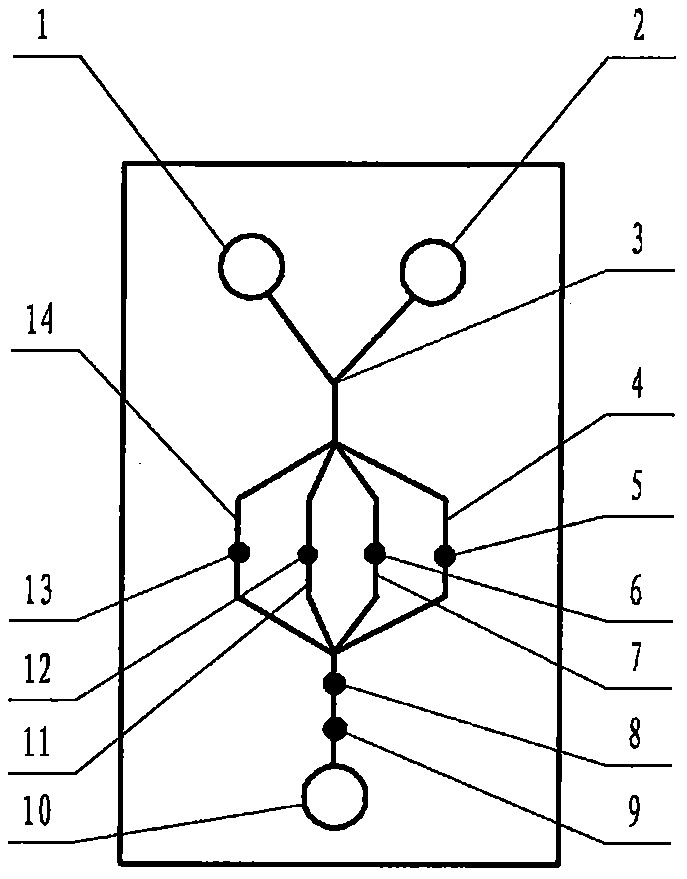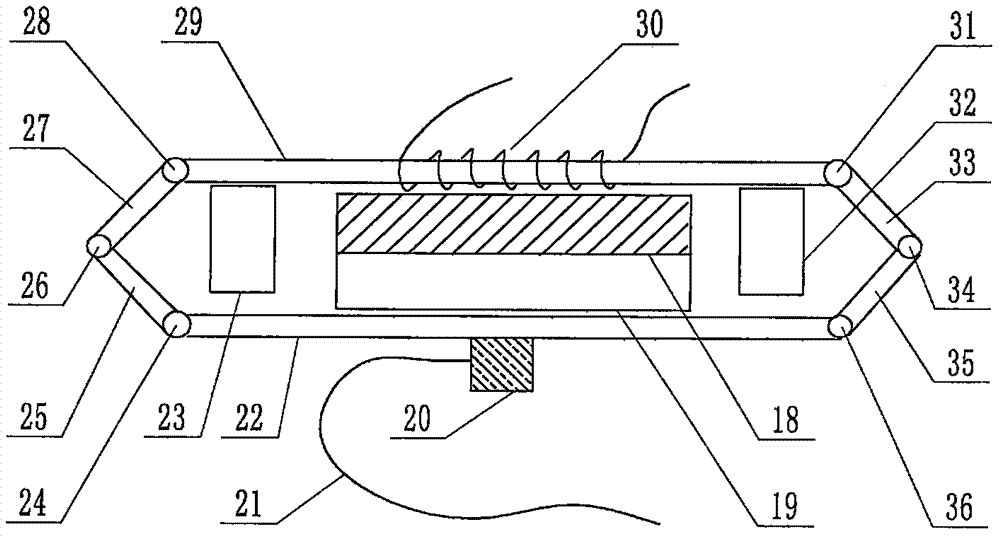A cholera diagnosing micro-fluidic device having a sample liquid driving member capable of being rapidly dismounted
A technology of a microfluidic device and a microfluidic chip, applied in the field of analysis and testing, can solve the problems that have not been properly solved, the flow resistance is large, and the operation of the inner surface modification of the PDMS microchannel is troublesome.
- Summary
- Abstract
- Description
- Claims
- Application Information
AI Technical Summary
Problems solved by technology
Method used
Image
Examples
Embodiment Construction
[0073] exist figure 1 , figure 2 and image 3In the shown embodiment of the present case, the structure of the microfluidic device includes a multi-channel microfluidic chip, and the structure of the microfluidic chip includes a substrate 18 and a cover sheet 19 that are attached to each other and installed together. Both the substrate 18 and the cover sheet 19 are plates or sheets, and the side of the substrate 18 facing the cover sheet 19 contains a channel structure formed by a molding process or an etching process, and the substrate 18 also contains The window structure connected to the channel structure and pierced through the substrate is formed through a molding process, an etching process or a simple punching process, and the substrate 18 and the cover 19 that are attached to each other are jointly constructed to contain A microfluidic chip with a pipe structure and a liquid pool structure connected thereto, the liquid pools are liquid pool 1, liquid pool 2, and liq...
PUM
| Property | Measurement | Unit |
|---|---|---|
| Diameter | aaaaa | aaaaa |
| Length | aaaaa | aaaaa |
| Thickness | aaaaa | aaaaa |
Abstract
Description
Claims
Application Information
 Login to View More
Login to View More - R&D
- Intellectual Property
- Life Sciences
- Materials
- Tech Scout
- Unparalleled Data Quality
- Higher Quality Content
- 60% Fewer Hallucinations
Browse by: Latest US Patents, China's latest patents, Technical Efficacy Thesaurus, Application Domain, Technology Topic, Popular Technical Reports.
© 2025 PatSnap. All rights reserved.Legal|Privacy policy|Modern Slavery Act Transparency Statement|Sitemap|About US| Contact US: help@patsnap.com



